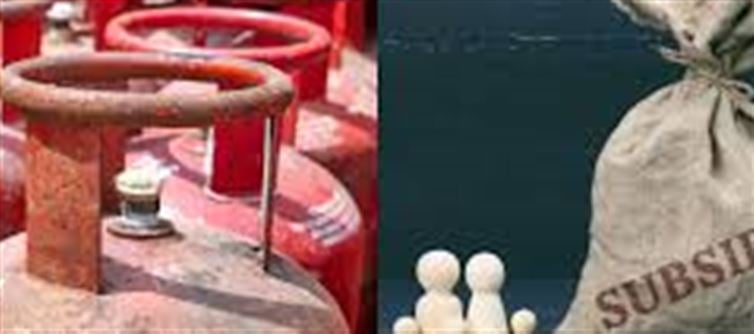
There are several possible reasons why consumers don’t receive the subsidy for their cylinder refills. These include eligibility, administrative linkage, policy changes and usage issues.
Eligibility criteria / Income and connection status
The government has signalled that households with higher income (for example, taxable income above ₹10 lakh per annum) may be excluded from the subsidy scheme.
Also, the subsidy regime has been re-targeted: only connections under schemes like Pradhan Mantri Ujjwala Yojana (PMUY) may be eligible for certain benefits now.
Some households may have opted out or relinquished the subsidy voluntarily.
Linkage issues – Aadhaar, bank account, KYC, connection details
The subsidy is credited by the government via a Direct Benefit Transfer (DBT) route into the bank account linked with your LPG connection. If your bank account or Aadhaar or other KYC is not properly linked, the subsidy may not be credited.
If you have changed your address, changed your connection agency, or you have multiple connections / duplicate connection issues, subsidy may be held up or blocked.
Policy / Budget‐related changes
At one point, the full universal subsidy was scaled back: e.g., in 2020 the government stopped certain universal subsidies for LPG and moved to focusing on poorer households.
Also, the subsidy amount may remain fixed (e.g., ₹200 per cylinder) regardless of rising market price of LPG, which makes subsidy less effective and sometimes means households drop out or don’t continue.
Usage / behavioural factors
Even if a household is eligible, if they do not refill the cylinder or have low refilling frequency, the subsidy benefit might be negligible or not credited. Some poor households switched back to biomass/wood because the cost of the refill (after subsidy) still remained high.
There is also diversion of subsidised cylinders (e.g., used for commercial or other unintended purposes) which triggers stricter checks and may lead to subsidy being withheld.
In short: not receiving subsidy may simply reflect ineligibility, administrative mismatch, policy targeting or non-usage of the cylinder.
✅ How to check whether your LPG subsidy is due / received
Here is how you can check your subsidy status:
- First, check your bank account shortly after a refill (if you are eligible for DBT subsidy) to see if the subsidy amount has been credited.
- Make sure your Aadhaar, bank account and your LPG connection details (name, address, agency) are all properly linked and updated in the records of your LPG distributor / oil marketing company.
- Visit the website of your LPG provider (for example, mylpg.in for various companies) and log in to check your profile / subsidy status. The official “Opt Out of Subsidy” document for domestic consumers states that you can check your details via these portals.
- If you suspect there is a mismatch (e.g., name, Aadhaar or bank account not linked), contact your LPG distributor or the customer service centre of your LPG company to update the details.
- Also check how many subsidised cylinders you have already availed in the year, if there is a quota or limit applied by your state/distributor (some policy proposals mention limiting number of subsidised cylinders per household).
📝 Key Takeaways
- Subsidies are not always “on‐by default” for every cylinder in every case — eligibility, linkages and usage matter.
- Ensuring your Aadhaar-bank-connection link is correct is very important to receive the subsidy.
- If you don’t receive the subsidy: verify eligibility, verify your details, check how many cylinders you’ve already taken, and contact your distributor.
- Policy changes mean the subsidy regime is evolving — so it’s wise to keep updated with official announcements or your LPG provider’s communication.
Disclaimer:
The views and opinions expressed in this article are those of the author and do not necessarily reflect the official policy or position of any agency, organization, employer, or company. All information provided is for general informational purposes only. While every effort has been made to ensure accuracy, we make no representations or warranties of any kind, express or implied, about the completeness, reliability, or suitability of the information contained herein. Readers are advised to verify facts and seek professional advice where necessary. Any reliance placed on such information is strictly at the reader’s own risk.




 click and follow Indiaherald WhatsApp channel
click and follow Indiaherald WhatsApp channel